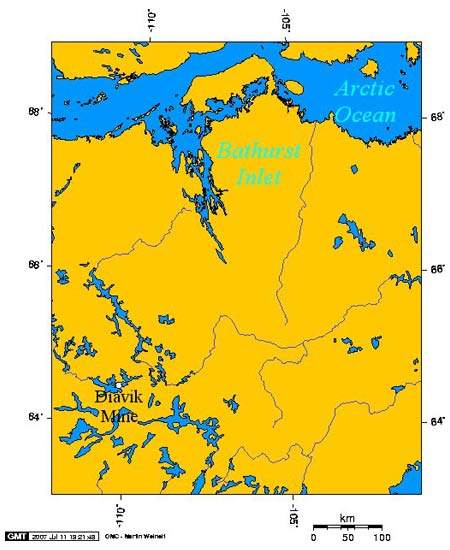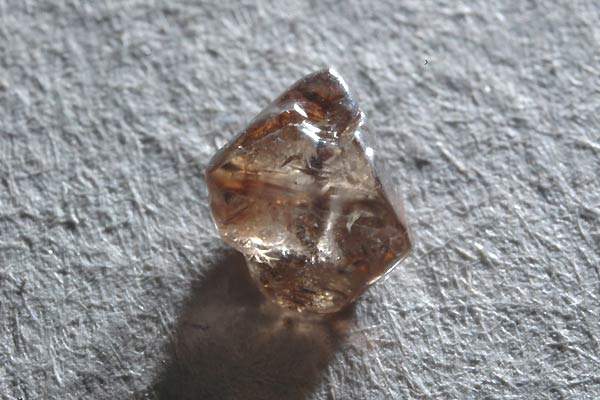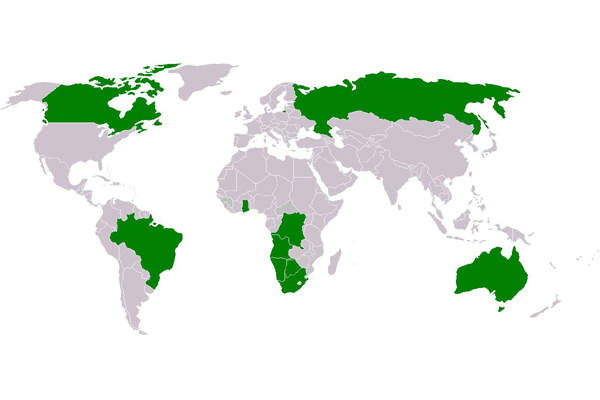The Diavik diamond mine is located on East Island, a 20km² island found in Lac de Gras, approximately 300km north-east of Yellowknife, the capital of Canada’s Northwest Territories. The open-pit mine has been converted into an underground operation. Production from the new underground mine began on 25 March 2010.
Open-pit operations began at the mine in 2003 but the mine was completely converted into an underground operation in September 2012. The conversion to an underground mine will extend the mine’s life to beyond 2020.
The mine is jointly owned by Diavik Diamond Mines, a subsidiary of Rio Tinto, and Dominion Diamond Corporation. The development of fourth pipe, A21, at sub-arctic Diavik mine site was approved by Rio Tinto in November 2014 and is estimated to attract an investment of $350m.
Diavik diamond mine reserves
The mine contains 18.1 million tons (Mt) of ore reserves within some of the highest-grade pipes in the world, with ores graded at 2.9 carats a ton (ct/t) in March 2015.
The deposit contains three diamond-bearing kimberlite pipes known as A154 south, A154 north and A418.
Located under the waters of Lac de Gras, the diamond pipes occupy between 0.9ha and 1.6ha of the surface area. It extends more than 400m below the surface.
The A154S pipe contains 1.8 million tons of proven and probable reserves graded at 3.7ct/t as of December 2014. Proven and probable reserves in the A154N pipe total 7mt at a grade of 2.3ct/t. The A418 pipe hosts 5.5 million tons of proven and probable reserves graded at 3.7ct/t.
Geology
The mine lies within the pre-Cambrian rocks of the Slave Geological Province, which is characterised by several deposits of gold, copper, zinc and diamonds. Formed more than 2.5 billion years ago, the rocks are categorised into three main units: greywacke-mudstone metaturbidites, tonalite-quartz diorite and two-mica granite.
The greywacke-mudstone turbidites unit is hosted within a north-west-south-east trending corridor that plunges steeply and extends through central East Island. The tonalite-quartz diorite unit, found on the southern side of East Island, hosts one of the kimberlite pipes. It intrudes the metaturbidite rock unit as a steep-sided stock. The two-mica granite unit forms a dyke and sheet complex and lies under most of the northern part of East Island. It hosts the other three kimberlite pipes. The ripped complex has separated the metaturbidites into differently sized horizontal and vertical blocks.
Diamond mining and processing
Open-pit mining at the mine was undertaken through two dykes. One dyke encircled the A514 pipe while the second surrounded the A418 pipe. The second dyke was completed in 2007, with mining beginning in 2008.
The ore is crushed to the required size at the on-site processing plant. It is then mixed with water and ferrosilicon to create slurry that is fed into cyclones, where the diamonds and indicated minerals are separated by density from waste rock.
During recovery, heavy mineral concentrate is separated from the waste minerals using X-rays, magnets and a grease table.
Under the light of the X-rays, the diamonds glow and photoelectric sensors enable the air blasts to blow the diamonds from the conveyor belt into the diamond collection receptacles. Preliminary evaluation and cleaning is carried out at the Diavik product splitting facility located in Yellowknife. A permanent containment area has been constructed at the centre of the island to store the waste minerals.
The Diavik Foxfire, a 187.7ct gem-quality rough diamond, was discovered by Rio Tinto at the Diavik Diamond Mine in December 2015.
Diamond production
The Diavik diamond mine produced approximately 6.89million carats from 2.10Mt of ore processed as of March 2015.









